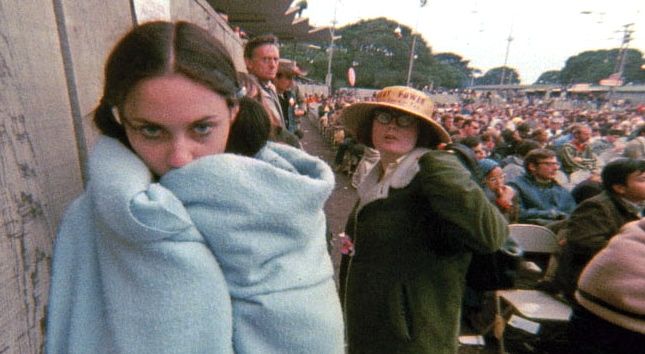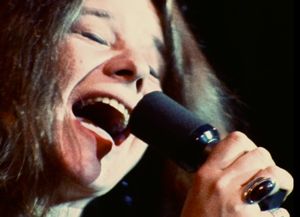
D.A. Pennebaker’s seminal “Monterey Pop” has been added to the National Film Registry of the Library of Congress.
The hugely influential rock music film captured breakthrough acts such as Big Brother and the Holding Company, the Jimi Hendrix Experience and the Who at the three-day California pop festival in June 1967.
Film and festival producer Lou Adler said: “I am extremely pleased and proud as I am sure John Phillips would be that ‘Monterey Pop’ has been selected for inclusion in the National Film Registry. Pleased that the film brings recognition to the artists involved in a cultural explosion of music festivals and celebrates a generation in tune with music and love.”
The late Phillips of the Mamas and Papas was the creative force behind the festival. His hitmaking singing group also closed the festival, giving its next-to-last performance.
Adler said he was “proud to have collaborated with D.A. Pennebaker, who crafted a film that perfectly documented the time, the music and introduced a genre of film making to be honored forever — long after June 16, 17 and 18, 1967, as proven by this selection.”
Films are selected by the Library of Congress subsidiary “because of their cultural, historic and aesthetic importance to the nation’s film heritage.”

“Monterey Pop” pioneered the free-flowing mix of rock performances and documentary content that later would propel the hit festival film “Woodstock.”
“It was for us a vast undertaking,” Pennebaker said of “Monterey Pop.” “We were using all five of our homemade cameras, some with 1,200-foot reels we’d never tried before, praying they’d all work, and that it turned out as wonderful as it did I can still scarcely believe. But every camera was guided by an artist, some for the first time, looking for the poetry of the music and its artists as never before.
“It was an inspired crew and every member of it earned this selection into the National Film Registry. They were the best.”
Unlike some films in the National Film Registry, “Monterey Pop” is in no need of further restoration. It remains commercially viable and has been rereleased several times by the prestigious Criterion Collection. It received a a 4k restoration a year ago.
The Criterion video rereleases include outtakes of several important groups not represented in the original film, such as Moby Grape, the Byrds, the Electric Flag and the Butterfield Blues Band.
“Monterey” was, remarkably, the work of a filmmaker without a clue. New Yorker Pennebaker knew nothing of the bands he was filming or of the world-changing events unfolding before his cameras in 1967.
“I was the most ignorant person there,” Pennebaker recalls in his Criterion DVD commentary. “It was a strange kind of Martian adventure for me.”
“Monterey Pop” captured the hippie music scene at a time closer to the Newport of Dylan than the chaos of the big Eastern rock fests. Many acts were folkies making the transition to rock, accomplished performers right at home on Monterey’s small traditional stage.
The mixed bag of performers included Simon and Garfunkel, Otis Redding, Jefferson Airplane, Canned Heat and Buffalo Springfield.
“Monterey Pop” was the first authentic and uncensored look at the counterculture on the big screen, with the indie concert film arriving ahead of “Woodstock” and even “Easy Rider.” For those already in the groove, “Monterey Pop” provided visual confirmation of the power and pull of “underground” music and culture.
Time has been kind to many of Pennebaker’s creative decisions. The inclusion of international acts Hugh Masekela and Ravi Shankar gives the film a contemporary musical tone. Otis Redding makes the cut, not Lou Rawls. Organic editing avoids the frantic cuts of rock cliche.
Other films among the 25 selected Dec. 12 are “The Shining,” “One-Eyed Jacks,” “My Fair Lady,” “Rebecca,” “Cinderella” and “Jurassic Park.”
I had the pleasure to see this film when it was first released and even though I’d heard and read about Jimi and Janis, Country Joe and Ravi, this was the first time I saw them and what a rush it was! Fifty years later I’m a serious collector of hippie/psychedelic artifacts and when I watch that film now, I’m scanning the background to see posters and buttons and other artifacts and wishing they had shot more scenes of the booths were hippie entrepreneurs were selling their art.
The poster from this event remains one of those holy grail posters I’ve yet to get, although I was very excited to find a bumper sticker from Monterey last year. Someone I bought something from on eBay sent me a scan of a photo he had taken of Paul Kantner at the Monterey Fest., not on stage, but just sitting there manning the booth of a friend of his, nobody else near him. It illustrates, how those stars were still able to walk around unmolested by fans. To a great degree this film changed all that for better or worse. What a magical time it was and how great that it was captured on film and has found its rightful place among other cinema art that will last forever.